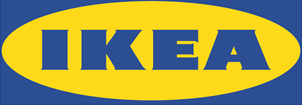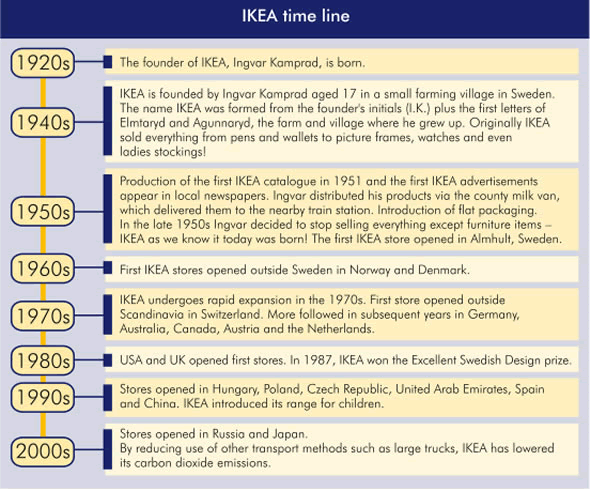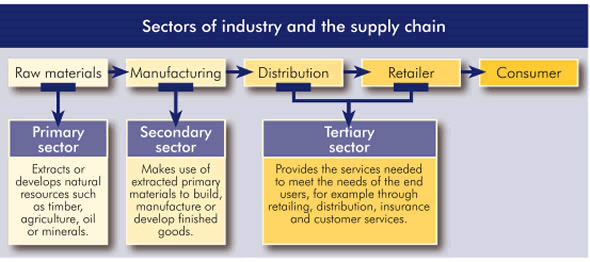 |
Building a sustainable |
| Introduction |
|
|
Sustainable: the ability to provide |
||
 |
| IKEA vision Listen with FIREFOX | ||||
The direction for the organisation is provided by its vision. This acts as a guide for
everybody within and outside the organisation about what IKEA wants to achieve. To meet this vision IKEA provides many well-designed, functional products for the home. It prices its products low so that as many people as possible can afford to buy them. |
However, in creating low prices IKEA is not willing to sacrifice its principles. ‘Low price but not at any price’ is what IKEA says. This means it wants its business to be sustainable. IKEA supplies goods and services to individuals in a way that has an overall beneficial effect on people and the environment. Customers all over the world have responded positively to IKEA’s approach. This is evident in its increasing sales. In 2006 IKEA had a group turnover of nearly 18 billion euros. |
Vision: the setting out of a pathway or picture that identifies what leaders of an organisation wish it to become. Turnover: sales of goods and/or services. |
||
| Sectors of industry and sustainable supply chains |
Listen with FIREFOX |
| When consumers go to a retailer like IKEA, they will be looking at the different ranges of
products and how they are presented. They may also look for quality customer service. However, consumers may not be aware that before products reach them, they must move from being raw materials through a variety of stages to become finished products suitable for sale. This is known as the supply chain. The supply chain involves a flow of production and processes through each of the three industrial sectors: |
Consumers: purchasers and
users of the products. Retailer: organisation involved in providing activities related to selling goods or providing services for the final consumer. |
Customer service: range of
activities provided by a retailer
designed to meet the needs of
customers. Supply chain: the flow of goods, materials and services from raw materials through to a final product. |
 |
|
| IKEA takes its responsibilities seriously and organises its operations in order to have a positive
effect upon the environment. • It aims that all the products and materials it takes from the primary sector do not harm the environment. • Its products are manufactured in a responsible way. The following sections look in detail at how IKEA has achieved its aim to be a responsible business in each of the three sectors of the supply chain. |
|